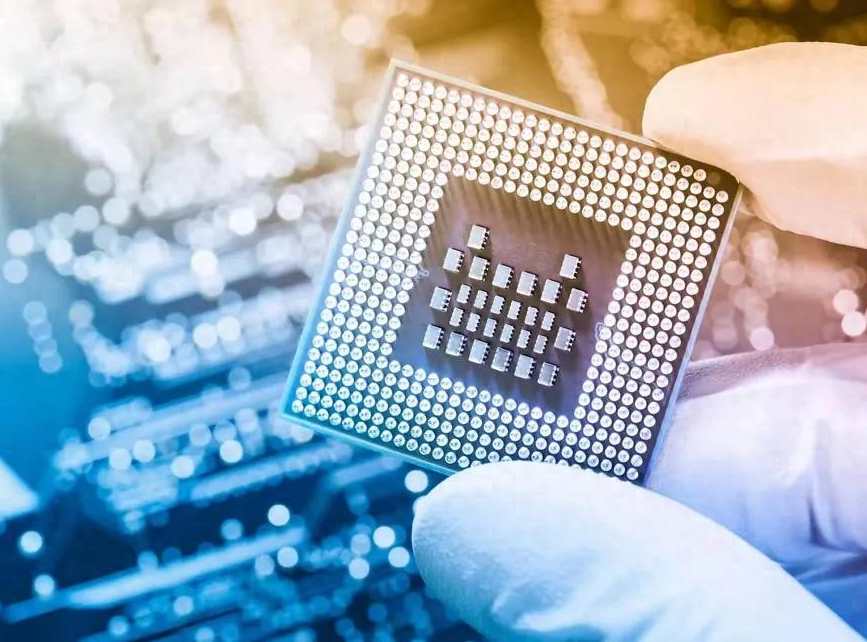U.S. Inflation Decline Set to Slow
December 11, 2024
Advertisements
In recent years, the escalating tech war between the United States and China has put the semiconductor industry at the forefront of this complex struggleInitiated as a strategic move to curtail China's rapid ascent, the U.Shas imposed a range of sanctions targeting Chinese chip manufacturers, striving to sever their access to cutting-edge technologyHowever, China has reacted decisively, not resigning to this pressure but instead fortifying its resolve through resource control, innovation, and technological breakthroughsThis transformative moment signifies a pivotal shift within the global semiconductor landscape, indicating that China's emergence in the chip sector may only be the beginning.
Since 2018, the U.Sgovernment has taken aggressive actions against China’s semiconductor industry, employing various restrictive measures often referred to as a "technology blockade." These measures include export restrictions and blacklisting specific Chinese firms, with companies like Huawei facing severe challenges that have disrupted global supply chains
Consequently, the Chinese semiconductor sector finds itself navigating unprecedented crises, as the weight of external technological embargoes threatens its growth and sustainability.
Faced with persistent American aggression, China has not chosen to yieldInstead, it has launched a multi-faceted counteroffensiveThis includes injecting increased investments into semiconductor R&D, striving to overcome the technology barriers imposed by sanctionsFurthermore, China is reshaping its industrial structure to reduce reliance on foreign technology and is asserting its position in the global market by controlling the exports of critical minerals vital for semiconductor production.
China possesses substantial reserves of essential minerals such as gallium, germanium, and graphene, which are crucial for the semiconductor industryGallium and germanium, recognized for their high-performance semiconductor properties, play critical roles in chip fabrication
Graphene, an innovative material, holds immense promise in the future landscape of chip technologyIn 2023, China announced its decision to impose export controls on these key mineral resources—a strategic retaliation that robustly responds to the U.Ssanctions on its semiconductor industryThe action conveyed a strong message: if the U.Spersists with its aggressive stance towards the Chinese semiconductor sector, China will reciprocate by restricting the supply of these vital materials to the global marketThis decision not only protects China’s interests but also warns the world that it will no longer be a mere "vassal" in the semiconductor arena, nor will it continue to depend on American high-tech solutions.
Huawei has emerged as a symbol of China's technological resurgence, particularly in the semiconductor manufacturing arenaAfter being severely affected by U.Ssanctions that halted production of its Kirin chips, Huawei did not capitulate
Leveraging the expertise of domestic R&D teams, the company successfully revived its chip production by breaking through to develop a 7nm manufacturing processThe launch of its Mate 70 series smartphones marked a significant milestone in the industry, challenging the prevailing notion that "advanced manufacturing processes can only be dominated by the U.S." Though the 7nm process is not the most advanced globally, its significance for Huawei lies in symbolizing a major achievement in their technological development, instilling confidence not only in the company but in China's semiconductor ambitions broadly.
The growing confidence in domestic chip capabilities is not confined solely to individual companiesIt reflects a notable shift in attitude across entire sectorsRecently, various industry associations in China, particularly from the automotive and communications sectors, have publicly denoted their skepticism towards the reliability of American chips, urging local firms to bolster their support for domestic alternatives

This sentiment epitomizes a significant trend: the Chinese market's increasing move away from dependence on U.Ssemiconductor products towards embracing homegrown solutionsThis transition is not merely a defensive strategy but a necessary step towards enhancing innovation capabilities across the boardAssertions that American chips are "unreliable" have morphed from isolated corporate opinions into a broader industry consensus.
China's path forward within the semiconductor landscape is increasingly defined by a focus on self-sufficiency bolstered by autonomous innovationFrom industry titans like Huawei and SMIC to a plethora of tech companies, the demand for domestic semiconductors is steadily rising, gradually claiming a more substantial share of the marketDespite facing significant challenges, particularly in advanced silicon-chip manufacturing, the pivotal trends surrounding continual breakthroughs and global cooperative efforts herald a period of renewed confidence for the Chinese semiconductor sector.
Alongside advancements in high-end chip technology, an array of enterprises are scaling up R&D investments
This push has seen domestic chips penetrate critical sectors such as electric vehicles, 5G communications, and artificial intelligenceParticularly in key fields like smartphones, servers, and data centers, domestically produced chips are showing promise in increasingly displacing imported solutions, thereby challenging the market strongholds of established global semiconductor giants.
The ongoing semiconductor rivalry between China and the U.Srepresents not just bilateral dynamics but also a profound reconfiguration of the global technological landscapeAs China amplifies its commitments to semiconductor innovation and investment, the competitive momentum of the global technology supply chain is shiftingShould the U.Scontinue to escalate its pressures on Chinese semiconductor enterprises, this could incite an unprecedented wave of decoupling within global tech industriesParadoxically, rather than stifling China’s ambitions, these aggressive strategies may catalyze accelerated technological advancements within Chinese semiconductor capabilities, pushing the world toward a more diversified and competitive landscape.
Ultimately, the rise of China's semiconductor industry extends beyond mere technical prowess; it encapsulates a significant national strategy aimed at enhancing security and promoting economic growth
Leave A Comment